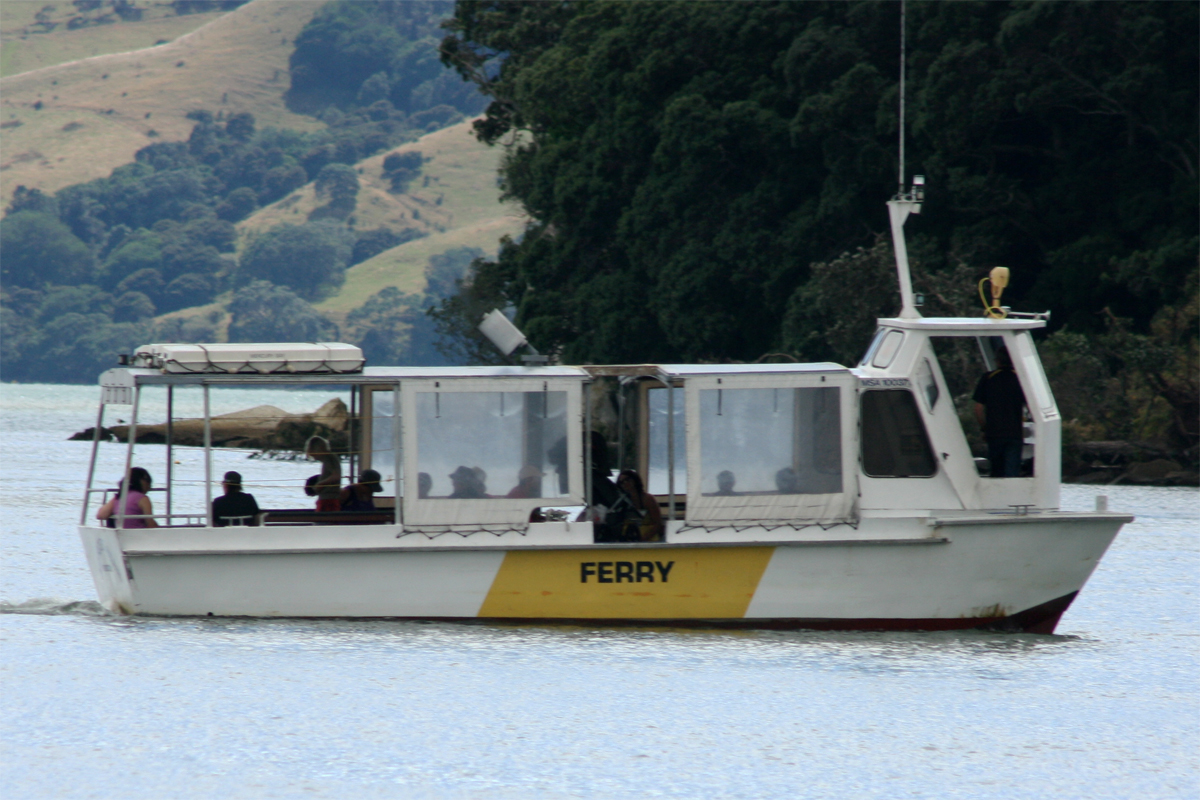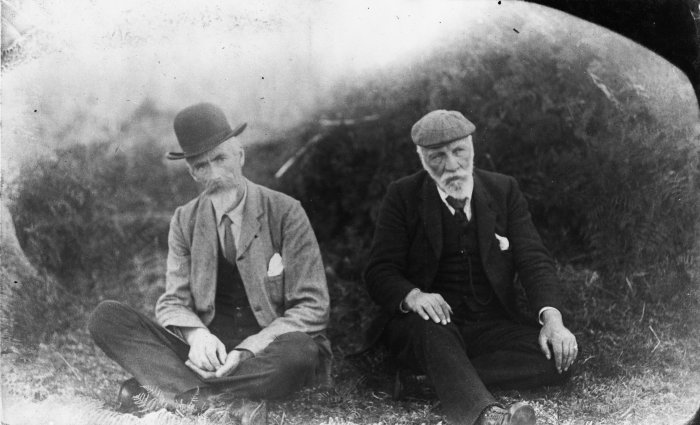|
Ngāti Hei
Ngāti Hei is a Māori iwi of New Zealand. Ngāti Hei is generally recognised as the dominant tribe of the Mercury Bay area. There has always been much speculation as to the origins of Māori people. Historians agree that Māori arrived in Aotearoa from place in the South Pacific Ocean called Hawaiiki, but its exact location has been the subject of much debate and speculation. By contrast, Ngāti Hei has much more definite ideas about whence they came. Ngāti Hei can trace its roots to the arrival of Kupe, the great navigator, who sailed from Tahiti to Aotearoa in 950AD and whose presence is commemorated in place names around the district. Ngāti Hei is named for the esteemed spiritual tauira (authority) Hei Te Arawa, who sailed with Kupe to Aotearoa on the waka. Ngāti Hei were reputed to be peaceable seafaring people. Unfortunately throughout history they endured much suffering at the hands of raiding parties who repeatedly stripped Ngāti Hei of their assets and slaughtered ... [...More Info...] [...Related Items...] OR: [Wikipedia] [Google] [Baidu] |
Māori People
The Māori (, ) are the indigenous Polynesian people of mainland New Zealand (). Māori originated with settlers from East Polynesia, who arrived in New Zealand in several waves of canoe voyages between roughly 1320 and 1350. Over several centuries in isolation, these settlers developed their own distinctive culture, whose language, mythology, crafts, and performing arts evolved independently from those of other eastern Polynesian cultures. Some early Māori moved to the Chatham Islands, where their descendants became New Zealand's other indigenous Polynesian ethnic group, the Moriori. Initial contact between Māori and Europeans, starting in the 18th century, ranged from beneficial trade to lethal violence; Māori actively adopted many technologies from the newcomers. With the signing of the Treaty of Waitangi in 1840, the two cultures coexisted for a generation. Rising tensions over disputed land sales led to conflict in the 1860s, and massive land confiscations, to which ... [...More Info...] [...Related Items...] OR: [Wikipedia] [Google] [Baidu] |
New Zealand
New Zealand ( mi, Aotearoa ) is an island country in the southwestern Pacific Ocean. It consists of two main landmasses—the North Island () and the South Island ()—and over 700 smaller islands. It is the sixth-largest island country by area, covering . New Zealand is about east of Australia across the Tasman Sea and south of the islands of New Caledonia, Fiji, and Tonga. The country's varied topography and sharp mountain peaks, including the Southern Alps, owe much to tectonic uplift and volcanic eruptions. New Zealand's capital city is Wellington, and its most populous city is Auckland. The islands of New Zealand were the last large habitable land to be settled by humans. Between about 1280 and 1350, Polynesians began to settle in the islands and then developed a distinctive Māori culture. In 1642, the Dutch explorer Abel Tasman became the first European to sight and record New Zealand. In 1840, representatives of the United Kingdom and Māori chiefs ... [...More Info...] [...Related Items...] OR: [Wikipedia] [Google] [Baidu] |
Mercury Bay
Mercury Bay is a large V-shaped bay on the eastern coast of the Coromandel Peninsula on the North Island of New Zealand. It was named by the English navigator Captain James Cook during his exploratory expeditions. It was first named ''Te-Whanganui-a-Hei'', the great bay of Hei, by the Māori. On 9 November 1769 Cook landed on the shores of the bay to observe a Transit of Mercury. In 1919 an area of land around Shakespeare Cliff was set aside, and a small memorial was constructed, based on the erroneous notion that it was the location of Cook's observations. But the actual site of Cook's landing and observation was the eastern end of Cook's Beach, near the Purangi estuary. A smaller memorial plinth was established there also. The brig ''Trial'' and the schooner ''Brothers'' were attacked by Māori on 20 August 1815 in Mercury Bay, when several sailors were killed. The bay was the resting place of HMS ''Buffalo'', a ship that transported passengers and prisoners to Australia tha ... [...More Info...] [...Related Items...] OR: [Wikipedia] [Google] [Baidu] |
Kupe
Kupe ( ~1180-1320) was a legendary Polynesian explorer, navigator and great rangatira of Hawaiki, who is said to have been the first human to discover New Zealand. Whether Kupe existed historically is likely but difficult to confirm. He is generally held to have been born to a father from Rarotonga and a mother from Raiatea, and probably spoke a proto-Māori language similar to Cook Islands Māori or Tahitian. His voyage to New Zealand would ensure that the land would be known to the Polynesians, and he would therefore be responsible for the genesis of Māori civilisation. Kupe features prominently in the mythology and oral history of some Māori iwi (tribes), but the details of his life differ between iwi. Various legends and histories describe Kupe's extensive involvement in the settlement of Aotearoa, around 1000–1300 CE, with many talking of his achievements, such as the hunting and destruction of the great octopus, Te Wheke-a-Muturangi. Time of arrival Estimates of ... [...More Info...] [...Related Items...] OR: [Wikipedia] [Google] [Baidu] |
Ra'iātea
Raiatea or Ra'iatea ( Tahitian: ''Ra‘iātea'') is the second largest of the Society Islands, after Tahiti, in French Polynesia. The island is widely regarded as the "centre" of the eastern islands in ancient Polynesia and it is likely that the organised migrations to the Hawaiian Islands, New Zealand and other parts of East Polynesia started at Raiatea. A traditional name for the island is Havai'i, homeland of the Māori people. Situated on the southeast coast is the historical Taputapuatea marae, which was established by 1000 CE. The site was the political and religious center of eastern Polynesia for several centuries, and was inscribed on the UNESCO World Heritage List in 2017 for its historical significance. The main township on Raiatea is Uturoa, the administrative centre for the Leeward Islands (French ''Îles Sous-le-vent''). There are also colleges which serve as the main educational location for secondary schools for students from the regional islands of Bora Bor ... [...More Info...] [...Related Items...] OR: [Wikipedia] [Google] [Baidu] |
Whitianga
Whitianga is a town on the Coromandel Peninsula, in the Waikato region of New Zealand's North Island. The town is located on Mercury Bay, on the northeastern coast of the peninsula. The town has a permanent population of as of making it the second-largest town on the Coromandel Peninsula behind Thames, New Zealand, Thames. Demographics Whitianga covers and had an estimated population of as of with a population density of people per km2. Whitianga North had a population of 5,493 at the 2018 New Zealand census, an increase of 1,086 people (24.6%) since the 2013 New Zealand census, 2013 census, and an increase of 1,689 people (44.4%) since the 2006 New Zealand census, 2006 census. There were 2,271 households, comprising 2,691 males and 2,805 females, giving a sex ratio of 0.96 males per female, with 882 people (16.1%) aged under 15 years, 729 (13.3%) aged 15 to 29, 2,310 (42.1%) aged 30 to 64, and 1,575 (28.7%) aged 65 or older. Ethnicities were 90.3% European/Pākehā, 1 ... [...More Info...] [...Related Items...] OR: [Wikipedia] [Google] [Baidu] |
Aotearoa
''Aotearoa'' () is the current Māori-language name for New Zealand. The name was originally used by Māori in reference to only the North Island, with the name of the whole country being ''Aotearoa me Te Waipounamu'' ("North Island and South Island"). In the pre-European era, Māori did not have one name for the country as a whole. Several meanings for Aotearoa have been proposed for the name; the most popular translation usually given is "land of the long white cloud", or variations thereof. This refers to the cloud formations which helped early Polynesian navigators find the country. Beginning in the late 20th century, ''Aotearoa'' has become widespread in the bilingual names of national organisations and institutions. Since the 1990s, it has been customary for particular parties to sing the New Zealand national anthem, "God Defend New Zealand" (or "Aotearoa"), in both Māori and English, exposing the name to a wider audience. New Zealand English speakers pronounce the wo ... [...More Info...] [...Related Items...] OR: [Wikipedia] [Google] [Baidu] |
Ngāpuhi
Ngāpuhi (or Ngā Puhi) is a Māori iwi associated with the Northland region of New Zealand and centred in the Hokianga, the Bay of Islands, and Whangārei. According to the 2018 New Zealand census, the estimated population of Ngāpuhi is 165,201. This compares to 125,601 in 2001, 102,981 in 2006, and 122,214 in 2013. It is formed from 150 hapū/subtribes, with 55 marae. Despite such diversity, the people of Ngāpuhi maintain their shared history and self-identity. Te Rūnanga ā Iwi o Ngāpuhi, based in Kaikohe, administers the iwi. The Rūnanga acts on behalf of the iwi in consultations with the New Zealand Government. It also ensures the equitable distribution of benefits from the 1992 fisheries settlement with the Government, and undertakes resource-management and education initiatives. History Foundations The founding ancestor of Ngāpuhi is Rāhiri, the son of Tauramoko and Te Hauangiangi. Tauramoko was a descendant of Kupe, from ''Matawhaorua'', and Nukutawhiti, of ... [...More Info...] [...Related Items...] OR: [Wikipedia] [Google] [Baidu] |
List Of Māori Iwi
This is a list of iwi (New Zealand Māori tribes). List of iwi This list includes groups recognised as iwi (tribes) in certain contexts. Many are also hapū (sub-tribes) of larger iwi. Moriori are included on this list. Although they are distinct from the Māori people, they share common ancestors.Skinner, H.D., The Morioris of the Chatham Islands, Honolulu, 1923. K. R. Howe''Ideas of Māori origins'' ''Te Ara - the Encyclopedia of New Zealand'', updated 28 October 2008. Thomson, Arthur, ''The Story of New Zealand, Past and Present, Savage and Civilized'', 2 vols, London, 1859, i, 61. Belich, James, ''Making Peoples: A History of the New Zealanders, from Polynesian Settlement to the End of the Nineteenth Century'', University of Hawaii Press, 2002, pp.26, 65-66. Map of iwi See also * List of Māori waka * Lists of marae in New Zealand * Ngāti Rānana References External linksIwi Hapū Names Listfrom the National Library of New ZealandTe Kāhui Māngai (directory of iwi an ... [...More Info...] [...Related Items...] OR: [Wikipedia] [Google] [Baidu] |
Ngāti Hei
Ngāti Hei is a Māori iwi of New Zealand. Ngāti Hei is generally recognised as the dominant tribe of the Mercury Bay area. There has always been much speculation as to the origins of Māori people. Historians agree that Māori arrived in Aotearoa from place in the South Pacific Ocean called Hawaiiki, but its exact location has been the subject of much debate and speculation. By contrast, Ngāti Hei has much more definite ideas about whence they came. Ngāti Hei can trace its roots to the arrival of Kupe, the great navigator, who sailed from Tahiti to Aotearoa in 950AD and whose presence is commemorated in place names around the district. Ngāti Hei is named for the esteemed spiritual tauira (authority) Hei Te Arawa, who sailed with Kupe to Aotearoa on the waka. Ngāti Hei were reputed to be peaceable seafaring people. Unfortunately throughout history they endured much suffering at the hands of raiding parties who repeatedly stripped Ngāti Hei of their assets and slaughtered ... [...More Info...] [...Related Items...] OR: [Wikipedia] [Google] [Baidu] |




